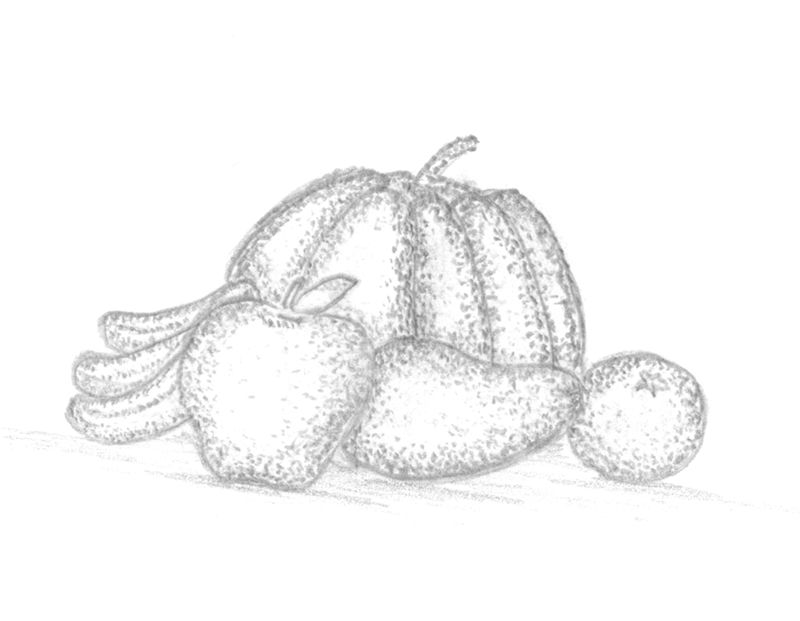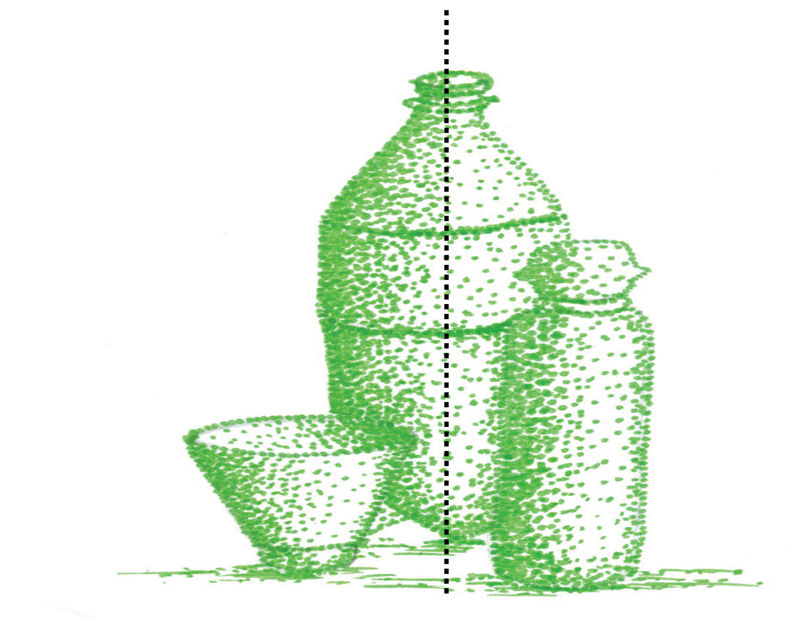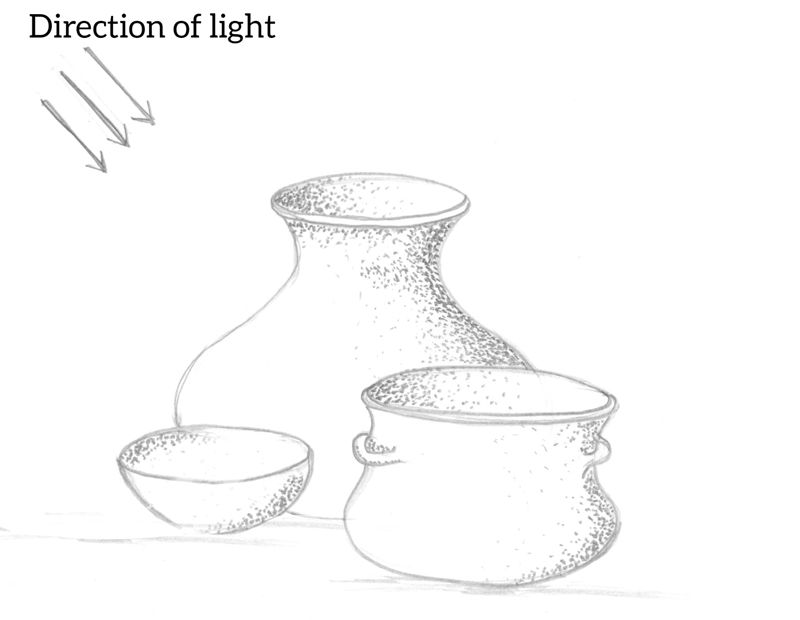Activity 1: Studying samples of drawings done using stippling technique
Did you know?
We can create a light to dark effect on a drawing using dots.
When an object is placed on a surface, some of its parts will receive more light than others. This will depend on the direction where most light is coming from. The parts that receive more light appear lighter than those that receive less light. To show dark effects, we use a dense concentration of dots. Sparsely placed dots are used to show light effect.


- What can you identify in the drawings?
- Identify the side light is coming from in each drawing.
- Study the drawings in the picture below and discuss the questions.

- How are the light and dark values achieved?
- What tools can we use to make such drawings?
- Discuss the procedure of making drawings using dots. Present your findings to your classmates.
Home activity
With the help of your parent or guardian, collect and bring to school paper, charcoal, pencils, pens and ruler among other tools and materials for making drawings using stippling technique.
Points to note
- When drawing, the parts that receive less light are made to have darker tones. Areas that receive more light are made to have lighter values or tones. Tone or value is the lightness or darkness of an object. Values can range from very light to very dark.
- Stippling technique is a method of creating light to dark effect on a drawing using dots. The dots are distributed closely and concentrated on the darker areas but scattered on the areas that receive less light.
Activity 2: Drawing and balancing three overlapped forms in a picture
Did you know?
The line of symmetry determines the balance of forms in a composition.
The line of symmetry is an imaginary line that passes through the centre of a drawing both vertically and horizontally.
Still life is an arrangement of non-living objects for the purpose of drawing or painting.



- Identify forms which have been balanced well from the drawings. How was balance achieved in the drawings?
- Using your digital devices, find still-life drawings from online resources. You may also study the drawings in the picture below or any other that will be provided.

- Have the forms been placed well within the space?
- Which drawings have balanced forms?
- Which ways can you use to ensure that your forms are well-balanced when drawing?
Points to note
To achieve balance in a composition, objects on both sides of the line of symmetry should be visually equal in weight.
Skills corner
- We can use the pictures we make to decorate our homes and classrooms.
- We should reuse waste paper to conserve the environment.
Use brown paper or backing paper and old calendars. Locally available materials like charcoal or soft coloured stones can be used to draw.
Activity 3: Drawing overlapped forms in proportion
Did you know?
The space available for drawing will determine the size of the composition and the size of the forms.
Proportion refers to how the sizes of different parts of a drawing relate to each other.
To achieve proportion in a drawing, draw objects in their correct sizes and balance the space correctly.




- Are the objects in the pictures proportional?
- Which of the drawings shows good use of proportion?
Activity 4: Drawing three overlapping forms and shading them using stippling technique
Did you know?
When arranging objects to create a composition, the bigger forms should always be behind the smaller ones.



- How can you draw the three forms together on a piece of paper to achieve balance and proportion?
- Describe the texture of each of the forms in the drawings above.
Follow the steps below to draw three overlapping objects.
Points to note
- Texture is the smoothness or roughness of a surface. We can use stippling to show roughness or smoothness of a surface. Use big dark dots to show rough texture and small light dots to show smooth texture.
- A high concentration of dots shows dark effect and few dots show light effect. Many dots also show shadows.
Activity 5: Drawing overlapping forms and shading them using stippling technique
Study the forms below and imagine how you are going to combine and draw them using stippling technique.
Activity 6: Talking about own and others’ drawings
Label and display your drawings on the classroom walls. Comment on your own and others’ drawings truthfully and politely.
- Which drawings have well balanced forms?
- Which drawings have proportional forms?
- In which drawings was stippling technique used to bring out correct textures?
- Identify the direction of light in the drawings.
- Which drawings need improvement?
- Suggest ways of improving the drawings.
Home activity
With the help of your parent or guardian, draw a picture of a bottle, cup and bucket. Shade it using stippling technique. Use the picture to decorate the wall of your house.
Summary
Self-check
- What does light to dark effect on a drawing represent?
- How can we use dots to create light to dark effect on a drawing?
Community service learning activity
Draw a picture of three kitchen utensils and shade it using stippling technique. Display the picture on the classroom wall to decorate it.
Key words
- Stippling is a drawing technique involving use of dots to create light to dark effect to achieve a three-dimensional form.
- Texture on objects can be varied by changing the sizes of dots and also by concentrating dots in one place.
- Balance is the distribution of parts evenly in a composition in the space provided.








